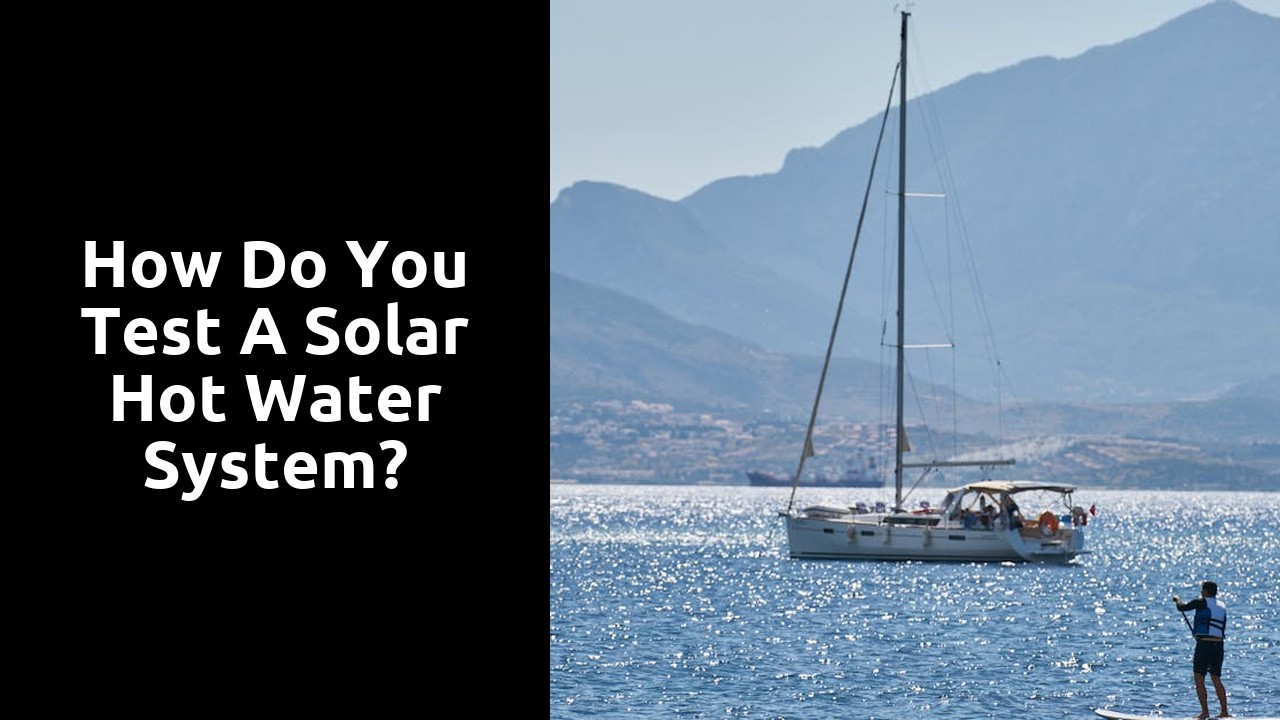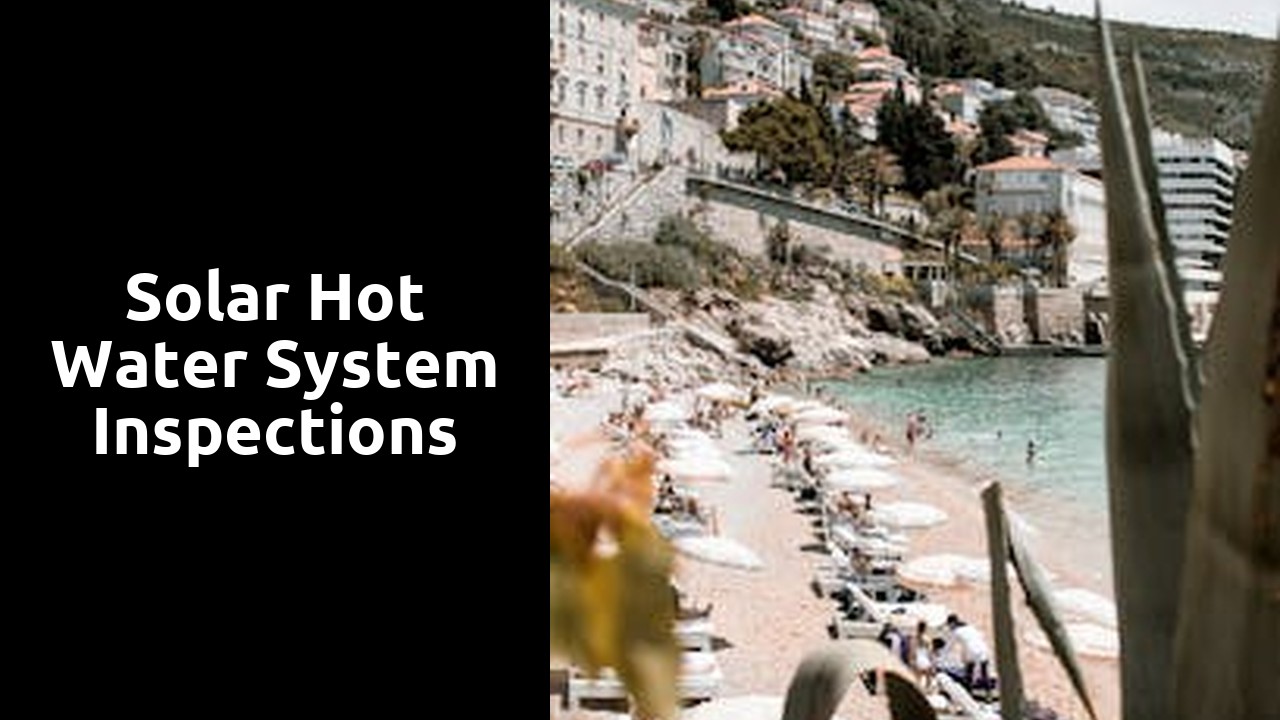
Testing the Pressure Relief Valve
When conducting Solar Hot Water System Inspections, one crucial step is testing the pressure relief valve. This component plays a vital role in releasing excess pressure within the system to prevent potential damage or hazards. To ensure the proper functioning of the pressure relief valve, it is essential to verify that it opens and closes correctly. This can be done by gently lifting the valve to check if it moves freely and then releasing it to observe if it reseats properly.
Moreover, it is recommended to test the pressure relief valve periodically to confirm its reliability. During the inspection of the solar hot water system, the pressure relief valve should be checked for any signs of leaks, corrosion, or blockages that could impede its operation. By incorporating this testing procedure into routine maintenance, homeowners can enhance the safety and efficiency of their solar hot water systems.
Ensuring it opens and closes correctly
Testing the pressure relief valve is a crucial part of solar hot water system inspections. Ensuring that the valve opens and closes correctly is essential for maintaining the safety and efficiency of the system. To check the functionality of the pressure relief valve, you can simply lift the lever on the valve and observe if water flows out. This action simulates the valve opening under high pressure conditions and allows you to confirm that it is working as intended.
If the pressure relief valve does not release water when the lever is lifted, it may indicate that the valve is faulty and needs to be replaced. It is important to address any issues with the pressure relief valve promptly to prevent potential damage to the solar hot water system. Regularly testing and maintaining this component will help ensure the safe and effective operation of the system in the long run.
Checking the Backup Heating System
Checking the backup heating system is a crucial step in conducting Solar Hot Water System Inspections. This component plays a vital role in ensuring hot water availability when solar energy is insufficient due to weather conditions or any other factors. To test the backup heating system, the first step involves verifying that it activates promptly when needed. This can be done by initiating a simulation where the solar energy is deliberately limited, leading to the automatic activation of the backup heating system. Observing the response time and efficiency of the backup system is essential in determining its effectiveness in maintaining a consistent supply of hot water.
Furthermore, it is imperative to check the functionality of the backup heating system in maintaining the desired water temperature. By monitoring the temperature levels during the activation of the backup system, any fluctuations or inconsistencies can be identified and addressed promptly. Additionally, assessing the energy consumption of the backup heating system during operation can provide valuable insights into its efficiency and cost-effectiveness. Regular testing and evaluation of the backup heating system are paramount in ensuring the overall performance and reliability of the solar hot water system.
Testing to ensure it activates when needed
Testing to ensure it activates when needed is a crucial step in Solar Hot Water System Inspections. This particular examination focuses on the backup heating system's ability to kick in when the sunlight is insufficient to provide the necessary hot water. It is imperative to simulate low light conditions and confirm that the backup heating system initiates promptly and effectively. This ensures a continuous supply of hot water even during periods of limited sunlight, guaranteeing the system's efficiency and reliability.
Ensuring the backup heating system activates when required is fundamental in maintaining the functionality of a solar hot water system. Regular assessments should be conducted to verify that the system seamlessly transitions to the backup heating mode as needed. By meticulously monitoring and confirming this feature performs optimally, homeowners can rest assured that their solar hot water system is equipped to deliver uninterrupted hot water supply throughout the day.
Evaluating the Controller Unit
Evaluating the controller unit is a crucial step in conducting thorough Solar Hot Water System Inspections. Begin by verifying that the settings and programming are correctly configured to ensure the system operates efficiently. Check that the controller unit is displaying accurate information such as water temperature and system status. Any discrepancies should be addressed promptly to prevent potential issues with the system's performance. Additionally, make sure to review the timer settings to guarantee the system is heating water at optimal times to meet the household's hot water demands.
Inspect the controller unit's sensors to confirm they are functioning properly. Sensors play a key role in detecting water temperature and ensuring the system operates at the desired levels. Ensure the sensors are clean and free from any obstructions that could impact their accuracy. It is essential to calibrate the sensors periodically to maintain the system's effectiveness. By evaluating and maintaining the controller unit, you can enhance the overall performance and longevity of your solar hot water system.
Verifying settings and programming
Verifying settings and programming is a crucial step in Solar Hot Water System Inspections. This involves thoroughly checking the controller unit to ensure that all settings are correctly configured according to the manufacturer's recommendations. It is important to confirm that the programming aligns with the specific requirements of the system to guarantee optimal performance and efficiency.
Additionally, meticulous attention should be paid to the timer settings and any other programmed features of the solar hot water system. Verifying the accuracy of the settings and programming is essential in maintaining the system's functionality and energy efficiency. Regularly reviewing and adjusting the controller unit settings will contribute to the longevity and effectiveness of the solar hot water system.
FAQS
How often should I test my solar hot water system?
It is recommended to test your solar hot water system at least once a year to ensure it is functioning properly.
Can I test the pressure relief valve on my own?
Yes, you can test the pressure relief valve on your own by following the manufacturer's instructions. It is an important safety feature that should be checked regularly.
What should I do if the backup heating system does not activate during testing?
If the backup heating system does not activate during testing, you should contact a qualified technician to inspect and repair the system.
Is it necessary to evaluate the controller unit of a solar hot water system?
Yes, it is important to evaluate the controller unit of a solar hot water system to ensure that the settings and programming are correct for efficient operation.
How can I ensure that the pressure relief valve opens and closes correctly?
To ensure that the pressure relief valve opens and closes correctly, you can perform a manual test by lifting the lever to release some water and then lowering it back into place.
